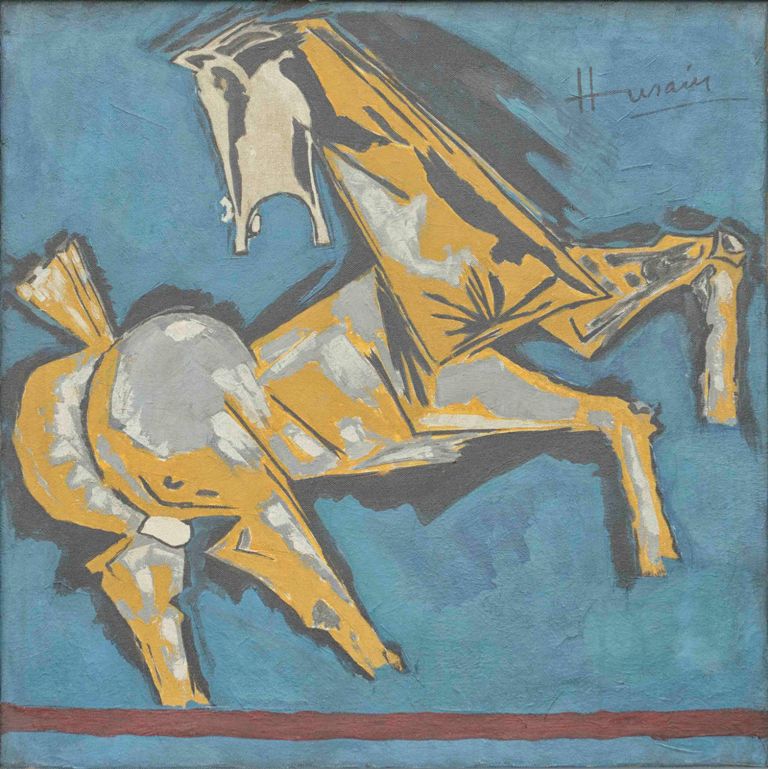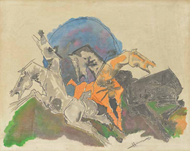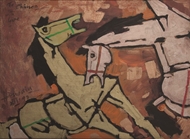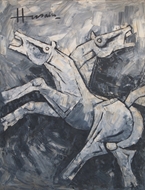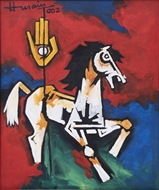![]() Significant Indian Art
Significant Indian Art
![]() Significant Indian Art
MAQBOOL FIDA HUSAIN (1915 - 2011)
Significant Indian Art
MAQBOOL FIDA HUSAIN (1915 - 2011)
RELATED LOTS
CONTACT US
Catalogue & Viewing
Lot Closed
Accounts & Shipping
Lot Closed
-
Literature
 Literature
Literature

Horses have inspired Husain from an early age. As a child he would accompany his grandfather Abdul when he visited the stables of his friend Achan Mian. All kinds of horses were brought there – trained horses from the cavalry, polo thoroughbreds, the palace horses of the Maharaja and also common horses that pulled the tonga and chariot. Abdul would narrate wondrous stories to him that would invariably feature horses – astonishing creatures of valour and wit. As he grew up Husain began to closely observe their magnificent forms and make perfect likenesses on walls and school notebooks using coal or chalk. On the tenth day of Muharram, when Duldul, the horse of Hazrat Imam Husain made its symbolic journey to Karbala – Husain followed the procession in wide eyed enchantment. The gaudy decorations of the horse made of coloured paper and tinsel mounted of wood fascinated him to no end. After the death of Abdul, Husain grew closer to his art, finding solace in its magical company. His horses began to imbib e the distinctive folk element of his native land, a quality that he maintained in his entire artistic career.
The innocence of folk at naturally mirrored Husain’s sensibilities and he admitted to be deeply attracted by it. The village festivals, earthen toys and other craft elements presented a playfulness that he could easily homogenise with. Also inspired by the classical figurines of the Gupta period,like the other members of the Bombay Progressive group of which he was a member, Husain strived to amalgamate the varied strands of indigenous art forms. For his colour palette he chose the vibrant colours of Basholi miniature paintings. His background experience in painting cinema hoardings helped him decipher the language of the strong and raw Basholi colours. Husain was competent in working on large scale canvases. The practice of painting huge format images standing precariously on makeshift scaffoldings had prepared him for it. Many of his contemporaries still shied away from working on such large format but Husain had begun carving his own genre of arts practice. He worked in fast sweeping motions, translating onto canvases the painting that had already formed in his mind.
This painting is testimony to the amalgamation of folk art with his fascination for painting horses that became stronger, when in 1952, then Prime Minister of India Jawaharlal Nehru, arranged a delegation of poets, writers and artists to visit China on a cultural exchange and Husain was selected to be a part of this group. The journey left an everlasting impact on his psyche. He met the celebrated artist Chi Pei Hung whose horses remained incomparable in their form and structure. Upon his return Husain began to work incessantly on the forms of his horses. They already had the beauty of form. To this he now added the ferocity of movement.
